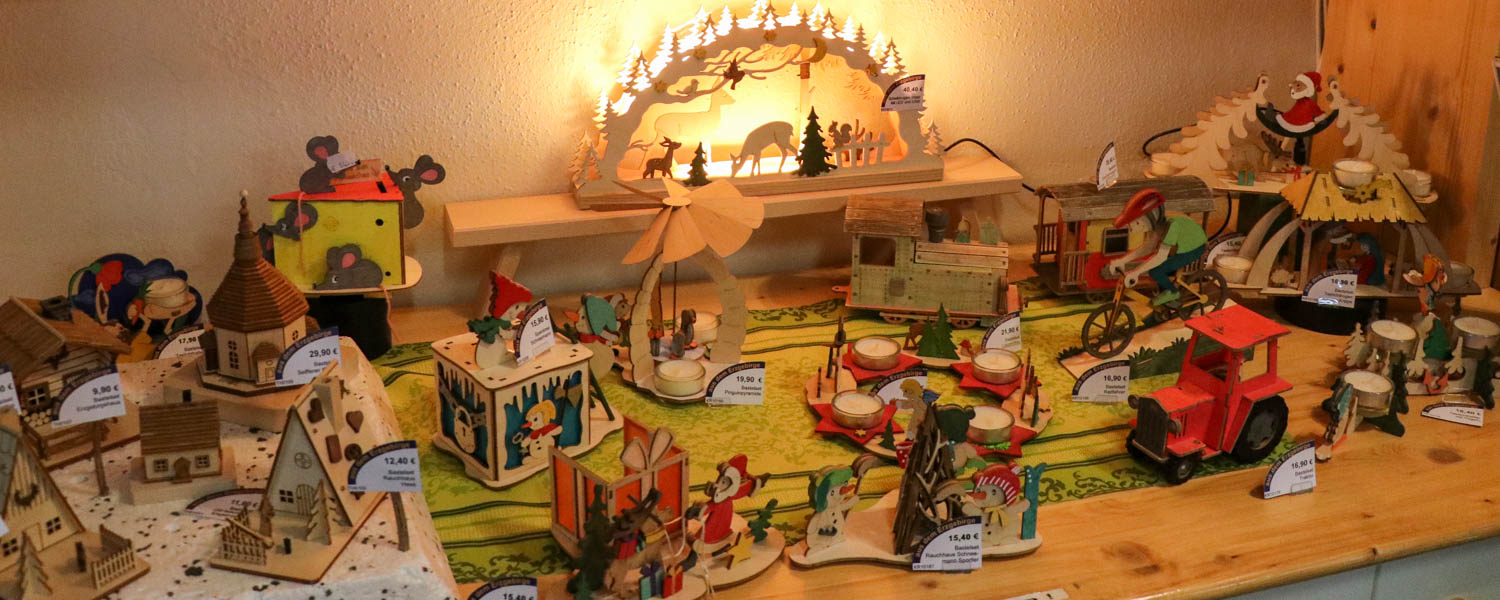
In an effort to bring you some new voices on Ottsworld, here is a guest post from writer Sherry Spitsnaugle. I met Sherry S at a Denver event and found out that she was a travel writer! So not only does she have a cool name, but she also has a way with words! All opinions, experiences, and photos here are hers. – Sherry O.
In the picture-book village of Seiffen, Germany, where the nutcracker was born, it’s Christmas every day. Like Santa’s workshop, the busy store where they make the beloved toy soldier hummed with workers drilling, carving, and painting the figurines sold around the world.
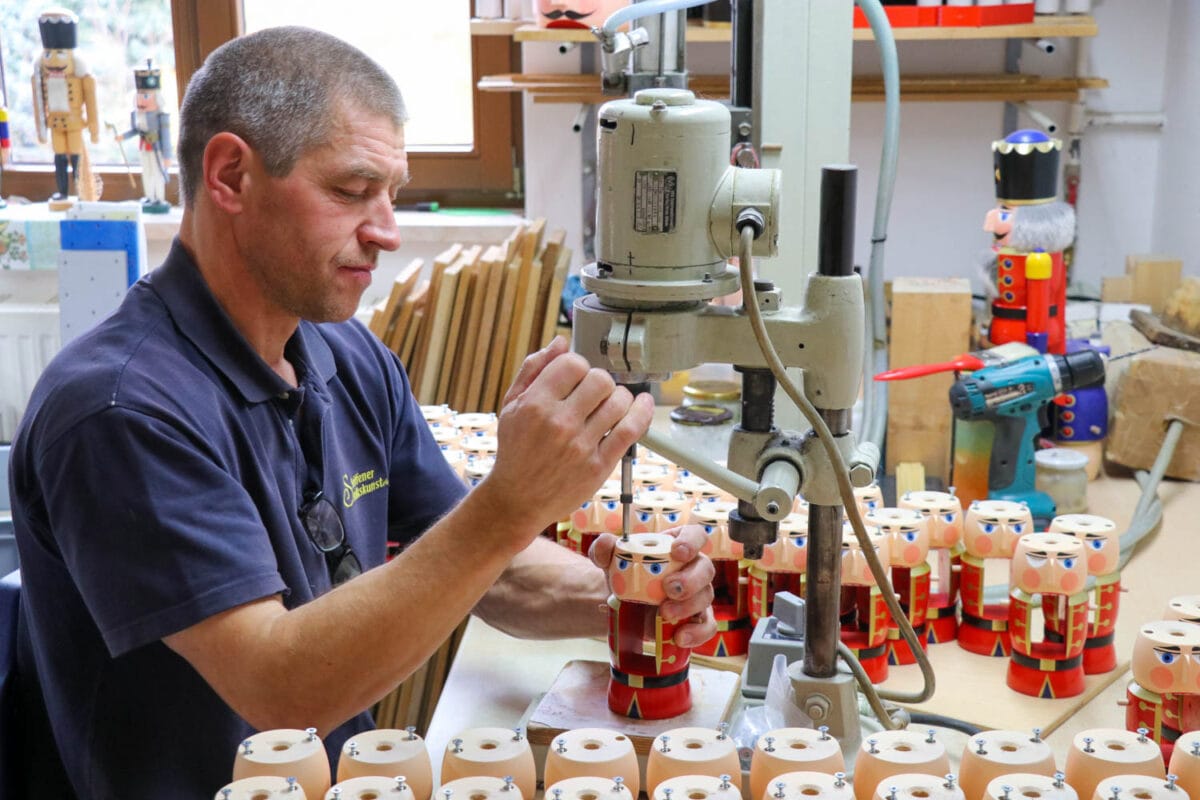
In late October, I traveled with a group of writers to explore the history, culture, art, and cuisine of the state of Saxony; the charming village of Seiffen, population 4,000, was a highlight.
Where is Seiffen Germany?
Known as the Christmas capital of Germany, Seiffen sits nestled in the heart of Saxony’s Ore Mountains – which are more like hills than mountains. Shops show off festive holiday colors and street lamps with phrases like “Silent Nacht” glow on every corner.
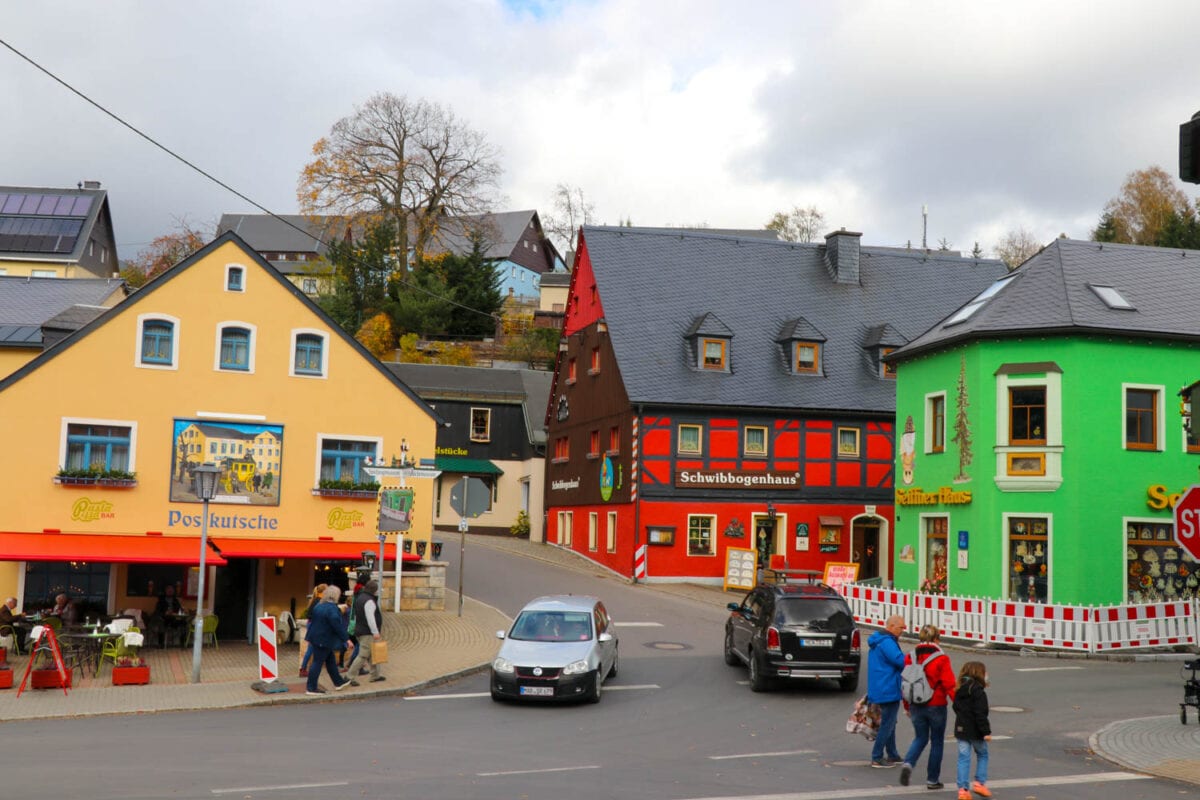
Getting to Seiffen takes commitment and planning because the cozy little berg is somewhat remote and is not close to a train station or the autobahn. But driving along winding roads through hills and hamlets is half the fun.
From Mining to Carving
Seiffen’s roots are in the mining industry, which is how villagers made their living hundreds of years ago. But by the late 1600s, silver and tin were diminishing, and miners had to find other ways to support themselves. They turned their wood-carving skills into a viable living, and the industry still thrives.
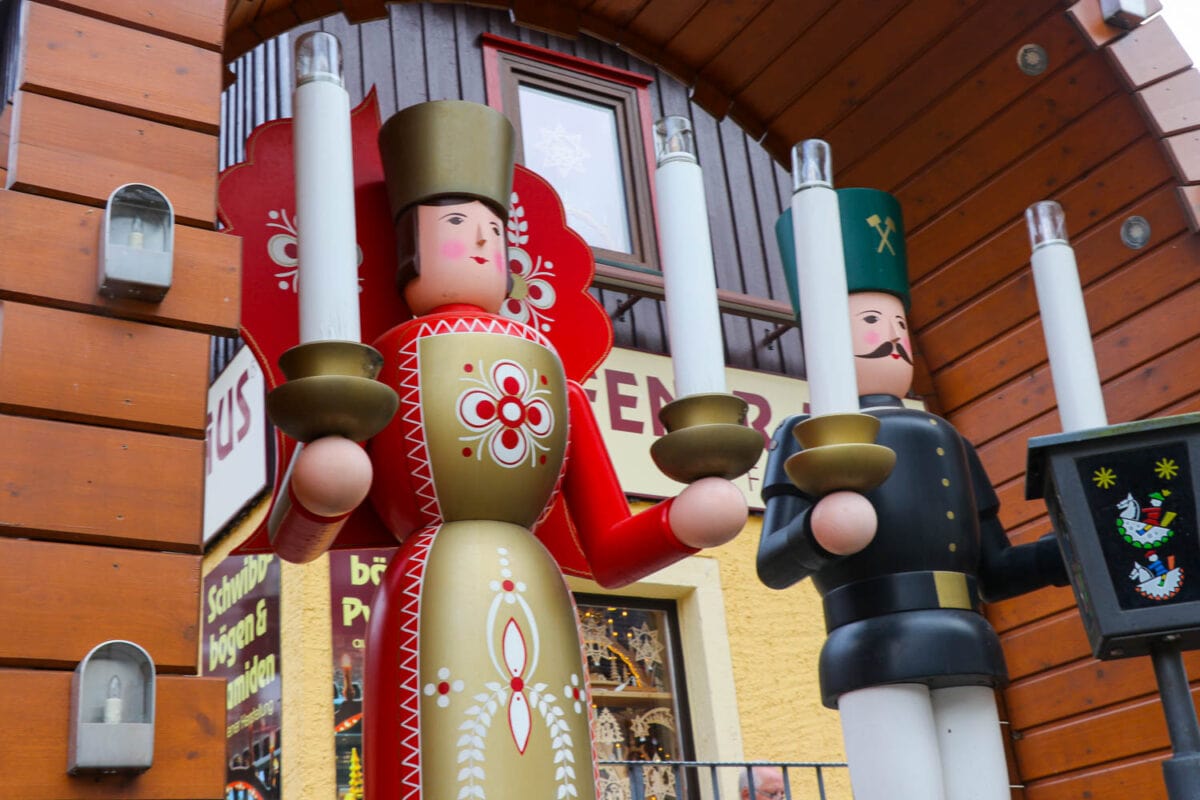
Wolfgang Gärtner, with Saxony Tourism, explained that locals here greet one another with the phrase “Glück auf,” the traditional miners greeting used to express a wish for good luck to workers heading into the mine.
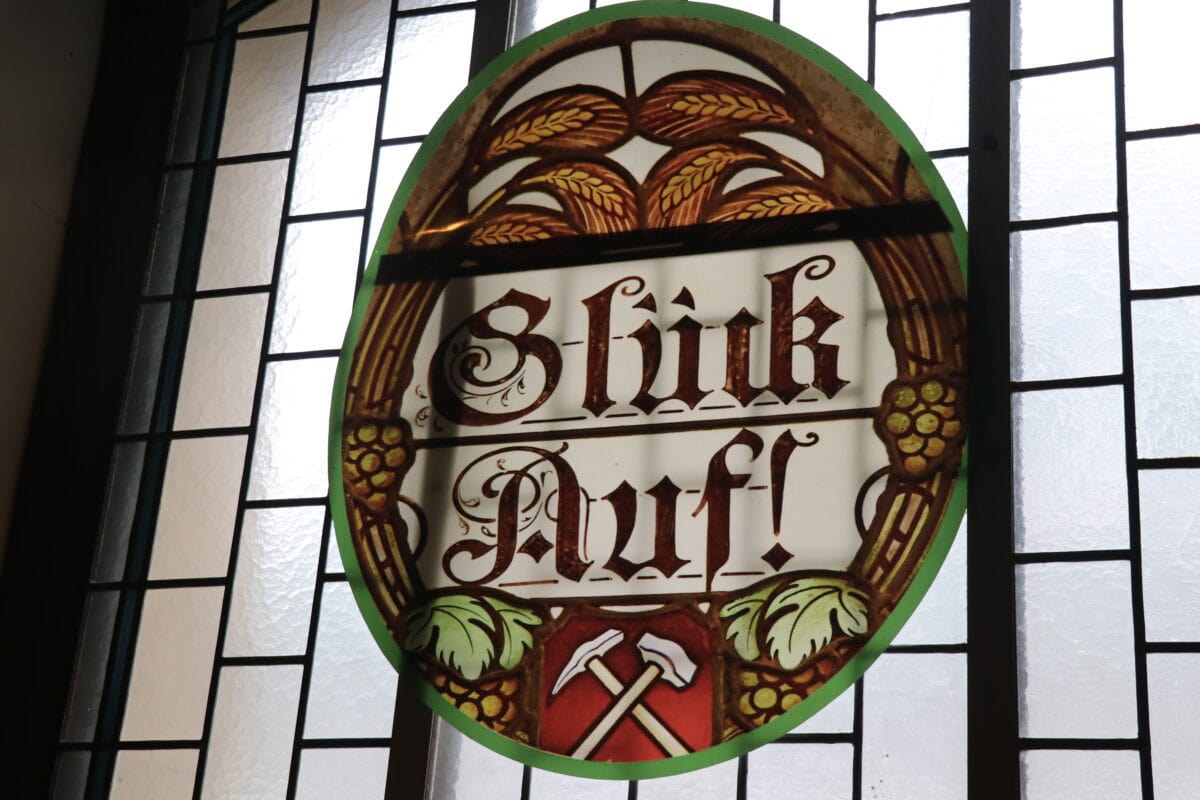
In Seiffen, we parked the vehicle and strolled through the easily walkable town, a real community with a bakery, daycare center, post office, and small church. Locals greeted one another and said hello to us as well.
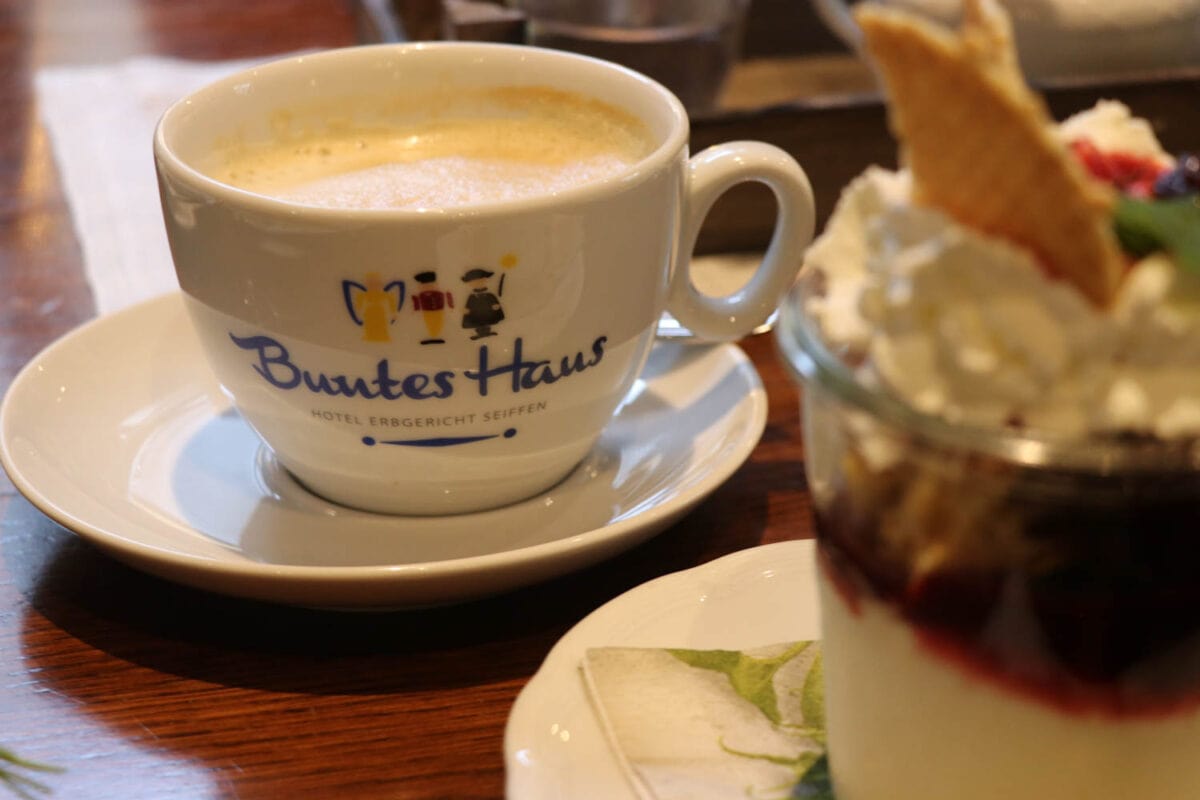
Where to Stay and Eat in Seiffen Germany
Buntes Haus, a hotel and restaurant which is an institution in itself, welcomes travelers from around the world. Built 480 years ago as a probate court, today the hotel and restaurant is family-run and inviting. Lace curtains, and wooden arches adorned with tiny lights to symbolize the miners’ hunger for light, create a traditional atmosphere.
On the menu was typical fare: fire-roasted char filet with pumpkin chutney and parsley potatoes, followed by Saxon tiramisu – a sour cream mousse, blackberry with crumble of Christmas stollen. And yes, beer.
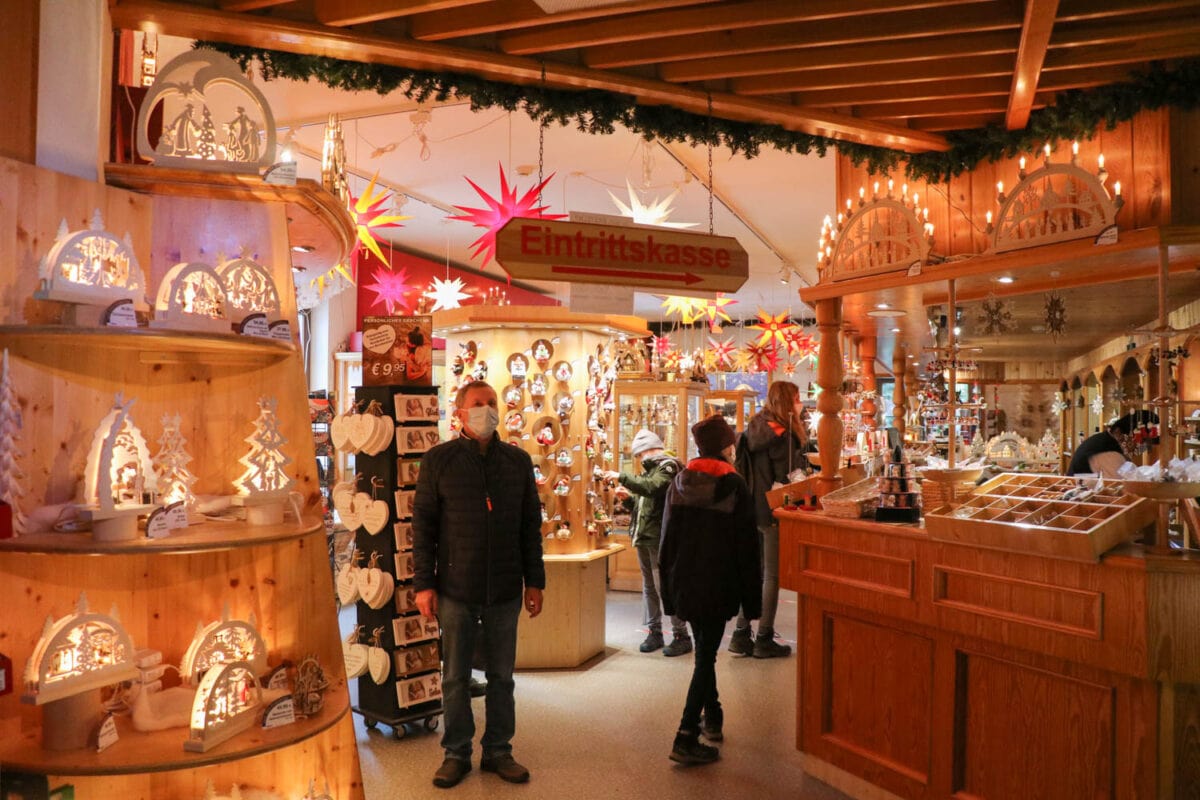
Christmas Every Day
After lunch, we walked a couple of blocks to Seiffener Volkskunst to watch as workers drilled, painted, carved, and lovingly created the iconic wooden dolls. And to shop. Hundreds and hundreds of nutcrackers of all sizes, shapes, and styles, line the walls. With all of the wooden pyramids and arches lit up, the shop glows.
Childhood Memories of Christmas
Seeing a nutcracker brought back memories as a child growing up in a small German community of western Kansas.
Once my father retrieved the Christmas box from the attic that held shiny ornaments and cherished treasures, my sibling and I knew it wouldn’t be long before the joys of the season would arrive. This meant no school, building snowmen, and gazing at the 40-foot Christmas tree lit up on Main Street, which I could see from my bedroom window just a block away.
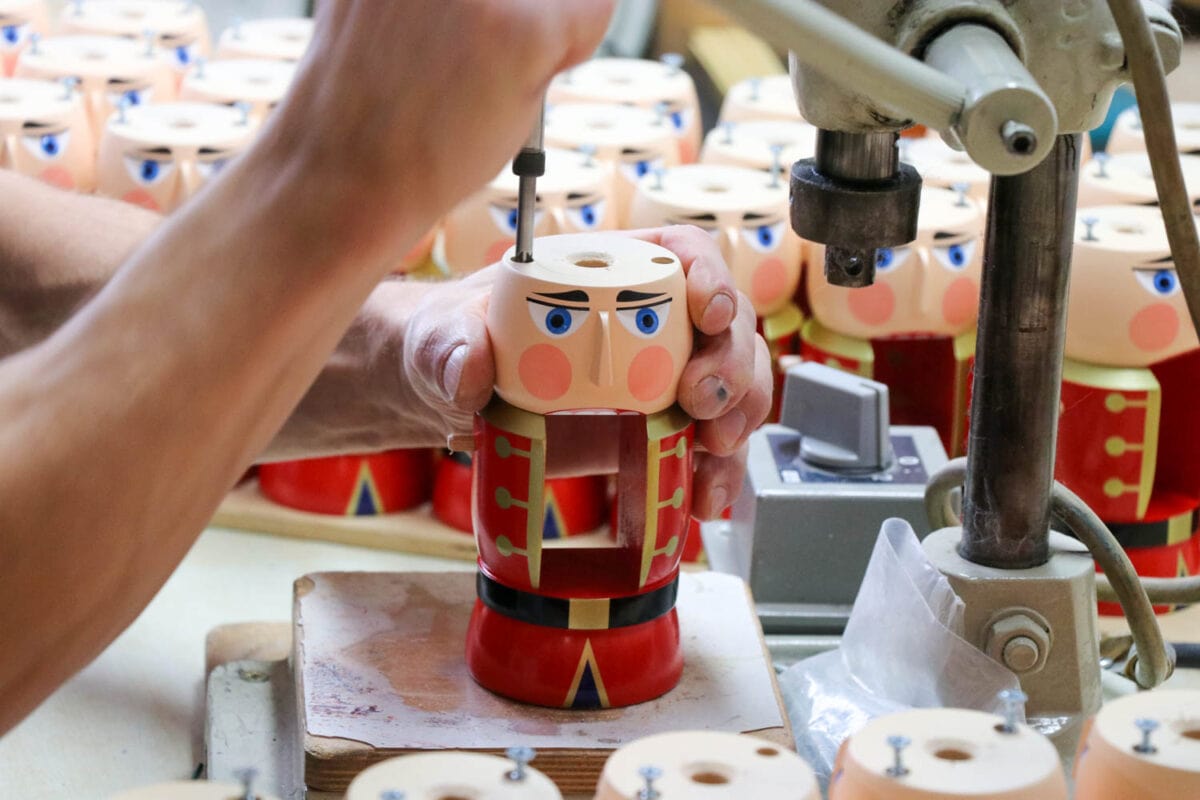
Our mother instructed us to use care with the “breakable” ornaments, passed down from generations; we knew to obey. I would carefully remove the nutcracker from its box and study its funny nose, red uniform, and gold crown.
History of the Nutcracker
The small wooden figure has a rich history, dating back to the late 1800s, when Friedrich Wilhem Füchtner of Seiffen, created a soldier wearing a crown which looked like a miner’s hat.
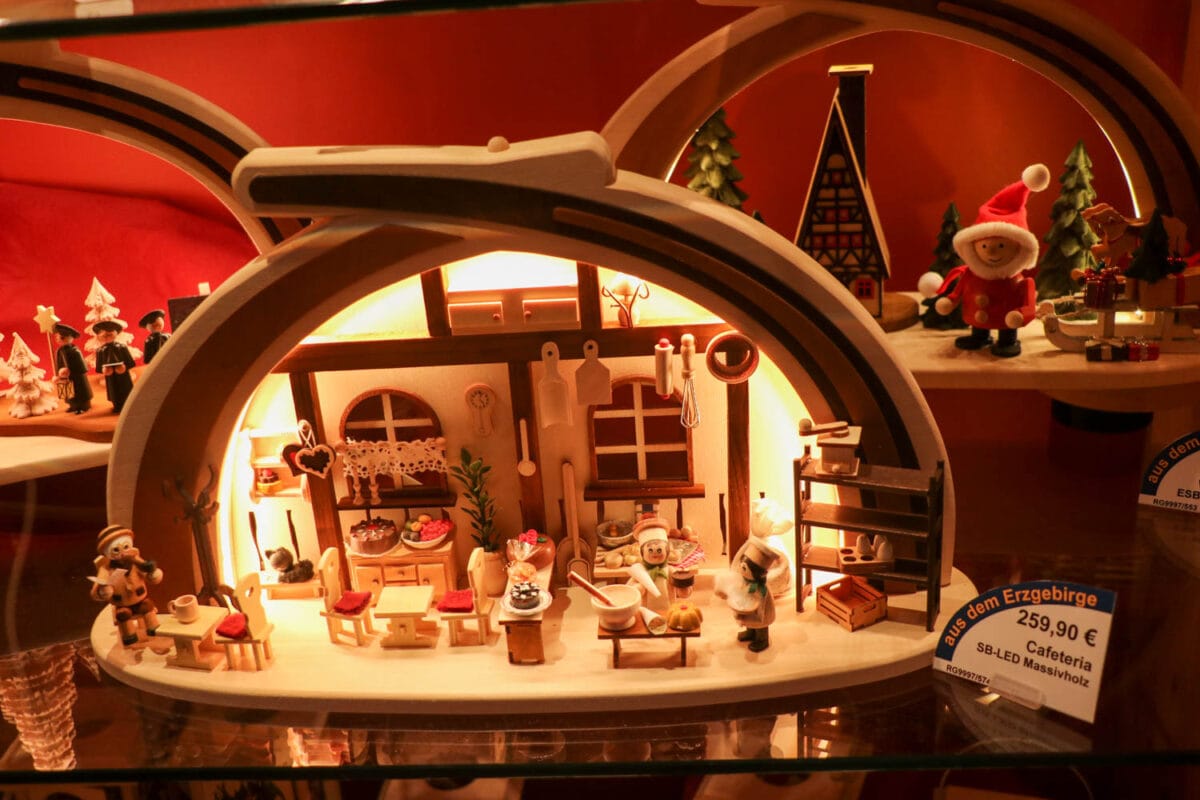
Legends say that the small soldiers guarded the house and protected its residents from evil spirits. Dining customs of the time included nutcrackers used during the desert course, which included pecans and hazelnuts.
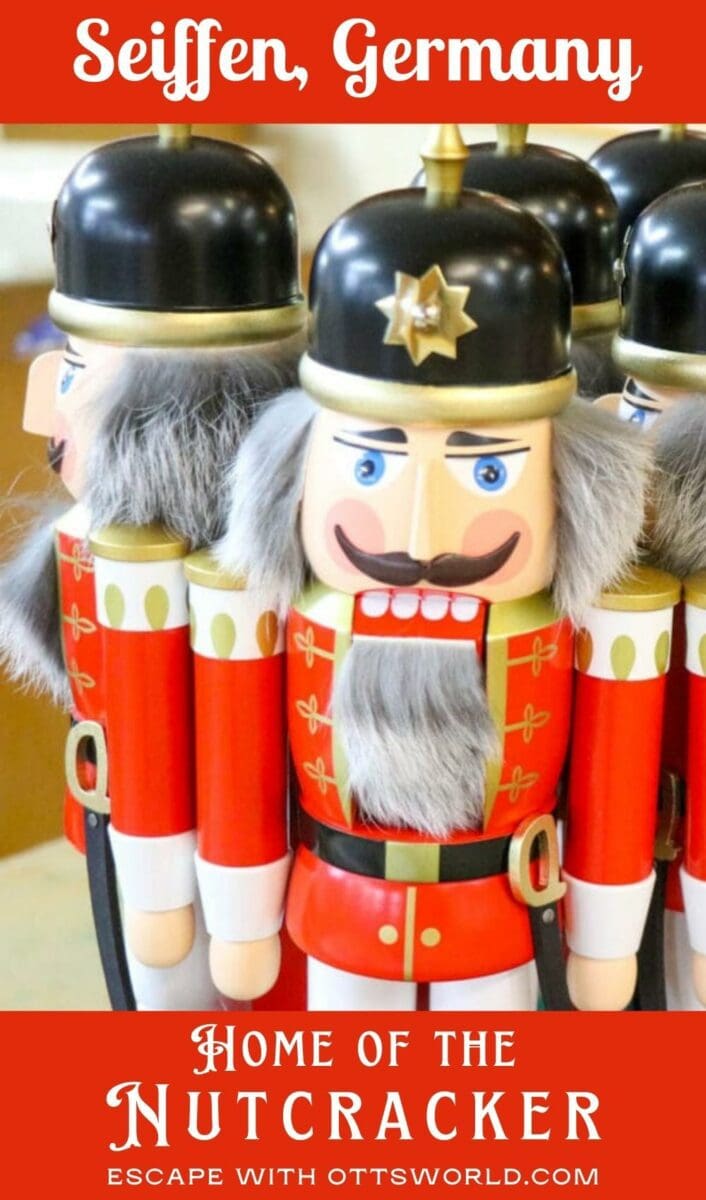
Nutcrackers Popularity in America
Nutcrackers became popular in the U.S. in the 1950s when soldiers coming home from World War II, brought the figurines home with them.
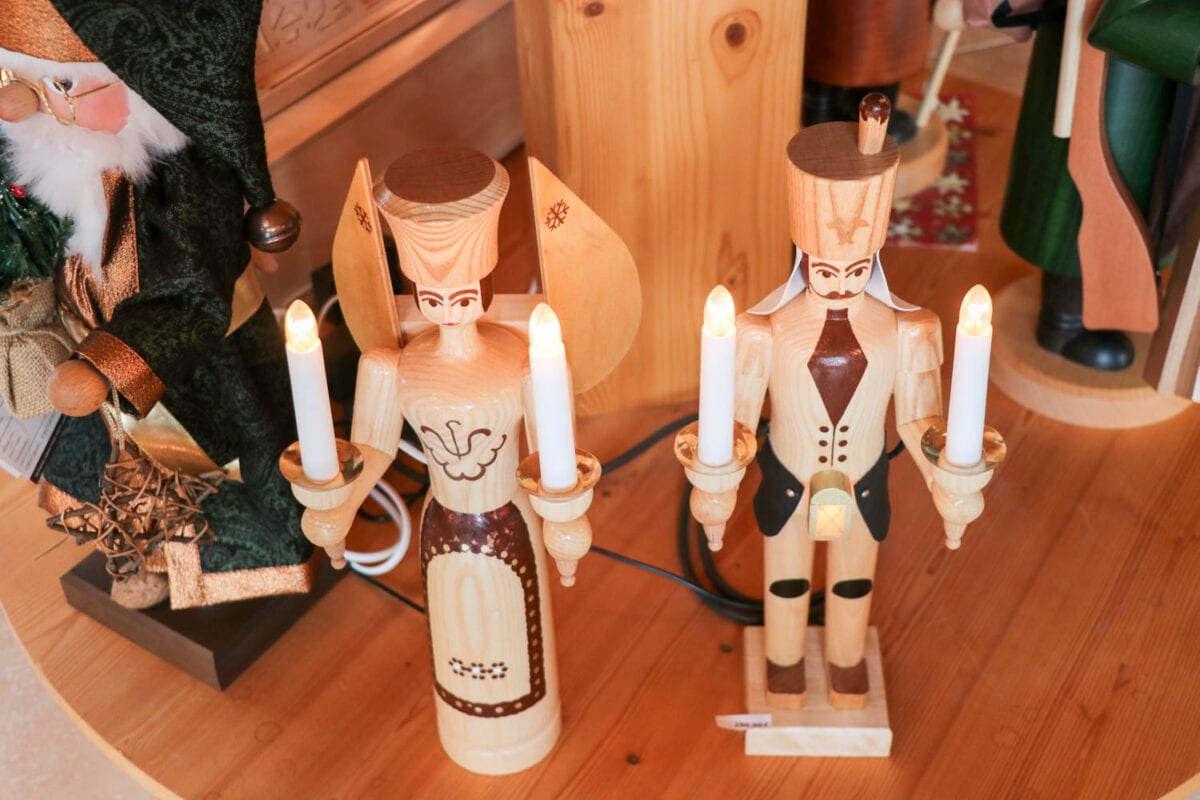
I was delighted to see one colleague, after careful deliberation, considering what each of her loved ones would like, come away with a bag stuffed with treasures for Christmas presents. The gifts are not only heartfelt and unique, but buying them supports the people who are committed to creating this masterfully made piece. In addition to the nutcracker, many ornaments are hand-crafted in Germany and have a cherished placed in homes around the world.
How Authentic German Nutcrackers are Made
The process to create these works of art is elaborate.
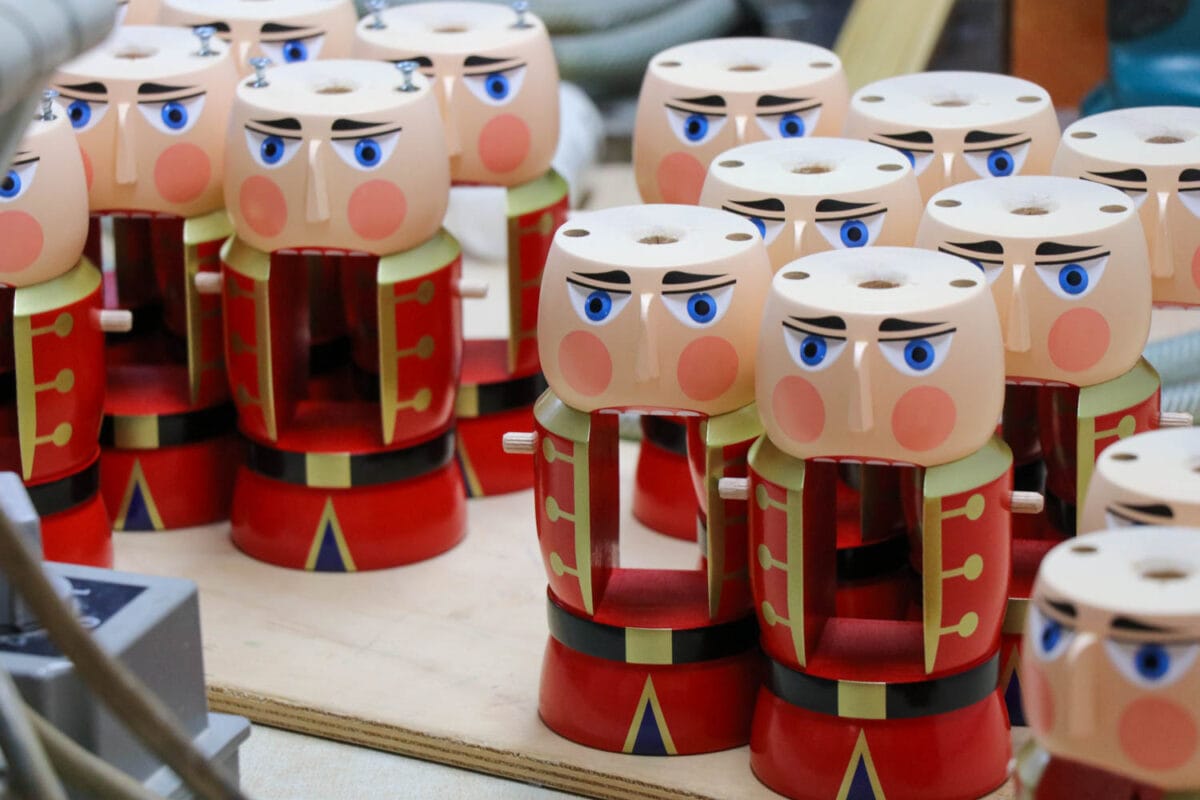
First, the wood is cut into specific sizes and shapes. Next, is the shaping, when the wood is put on a high-speed cutter, followed by hand-turning, an ancient craft that involves the turn of a hand to create the smooth parts from a wooden block. Dolls are then polished and drilled, primed and sprayed, and finally hand-painted.
No machine could take the place of the craftsman who creates the toy soldiers – each with its own personality, whimsical expression, and unique charm.
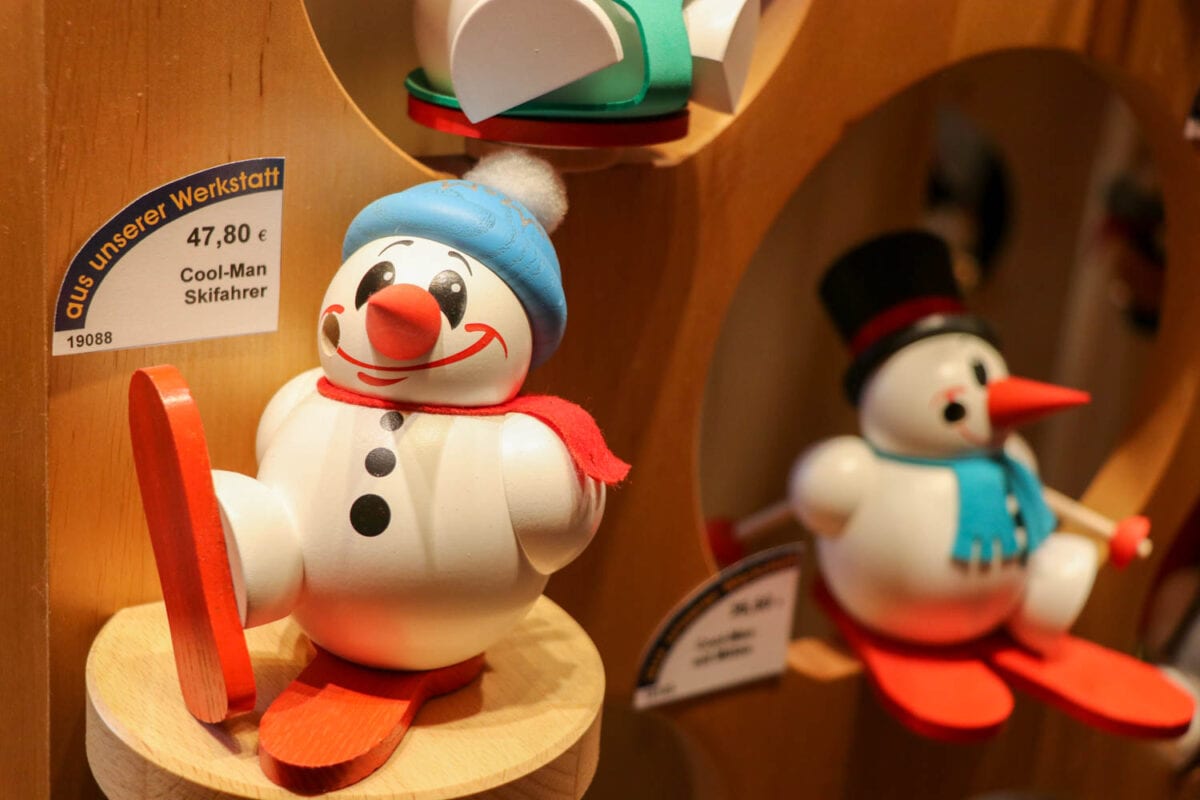
Today, artisans create many versions of the nutcracker, including skiers, dogs, doctors, and personalities, including an Angela Merkel figurine. There’s even a bargain section at the shop which offers seconds that supposedly have imperfections, although the figures looked flawless to me.
Don’t miss all of these other things Made in Germany by taking this Germany Road Trip!
Other Sites in Seiffen Germany
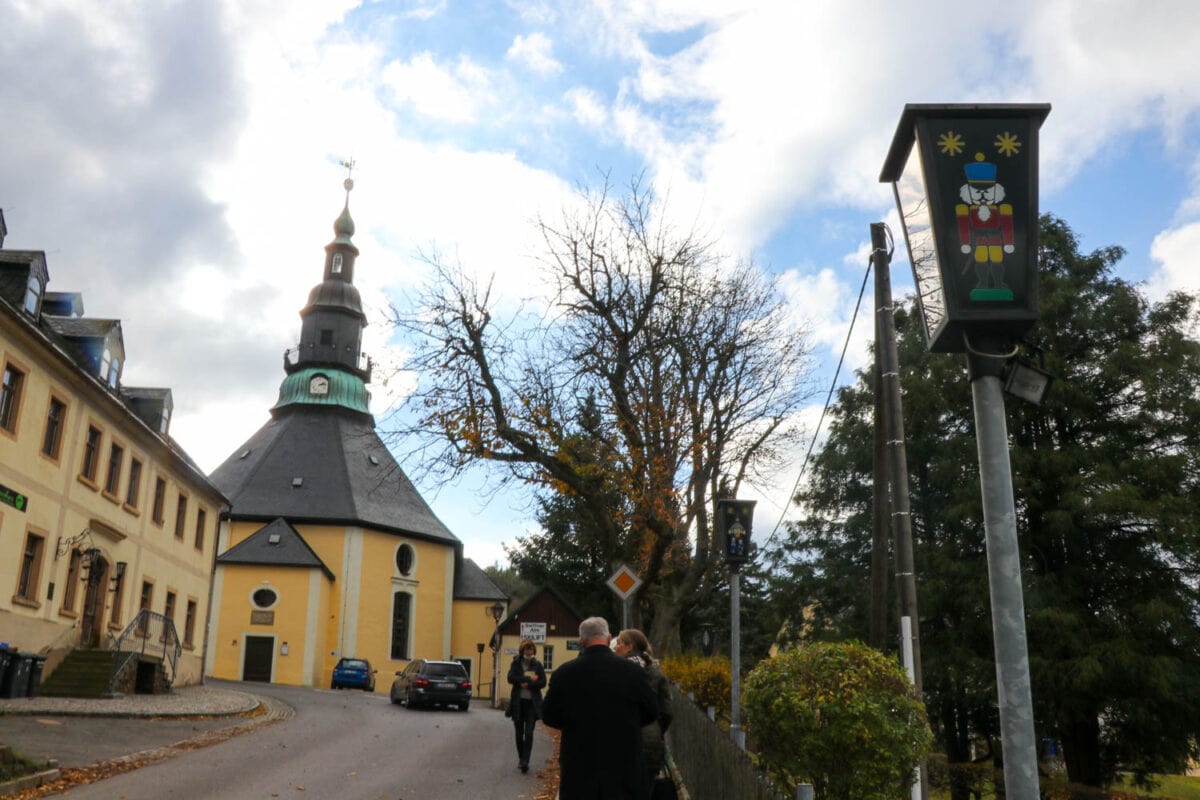
Octagonal Church
Sitting at the top of the hill overlooking the village is the Octagonal Church. While the pale yellow church does not have the splendor of cathedrals in other parts of Saxony, it has the warm feel of a neighborhood church. Here, a tight-knit community gathers; lanterns and wooden crosses depict the mining heritage of the town.
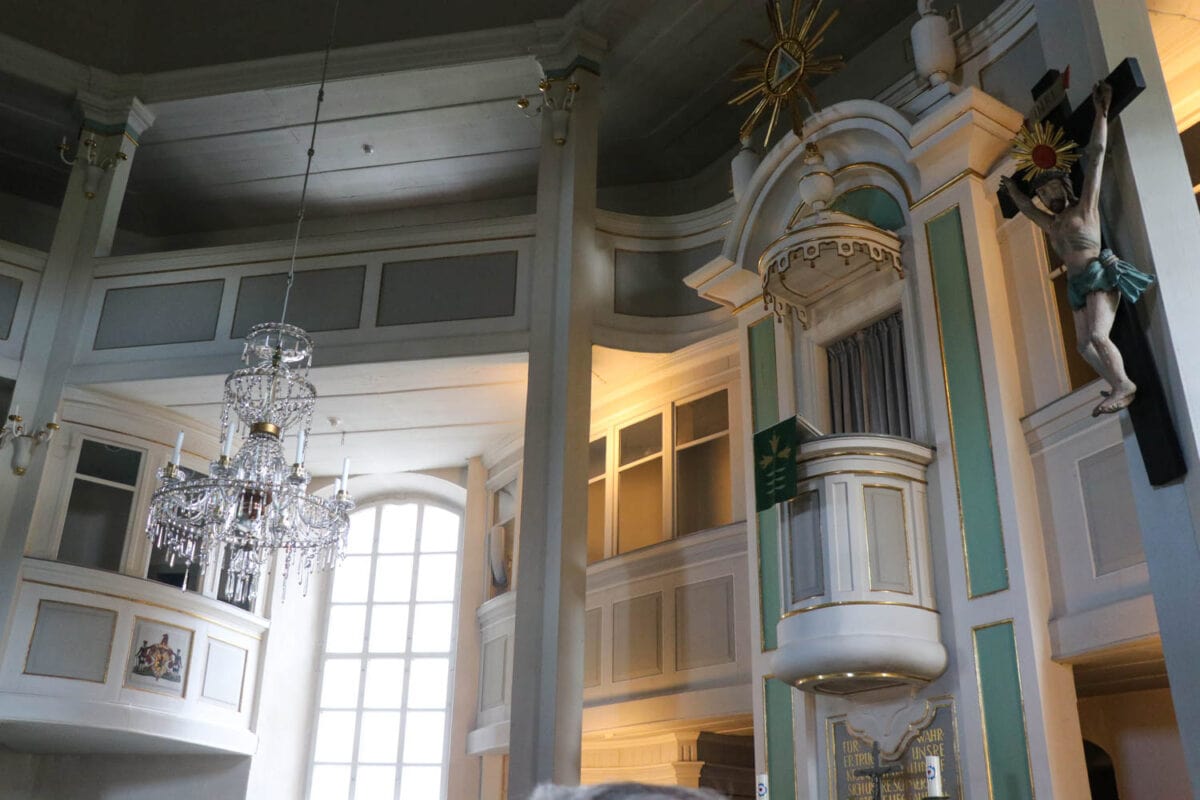
Wooden dolls hold candles near the entrance to the church and there’s a picturesque cemetery in back. Eight columns support the dome.
Toy Museum – A Step into the Past
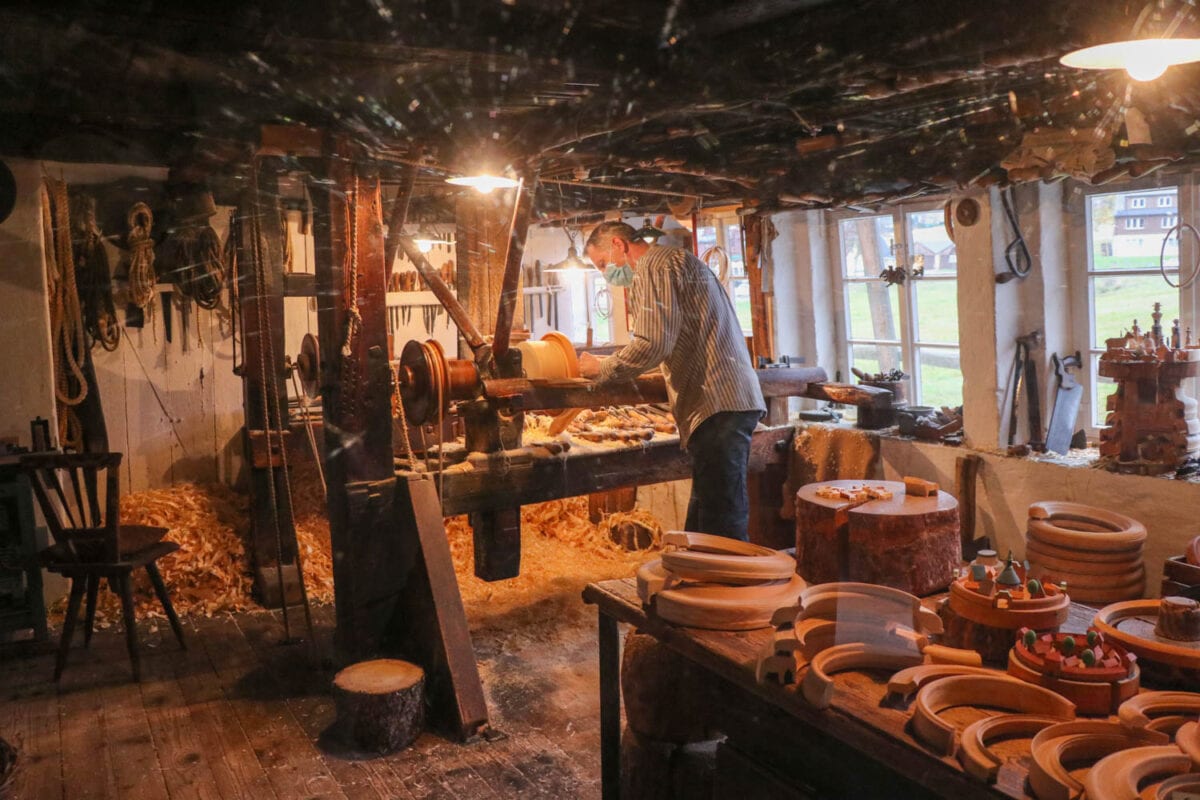
Down the road is the Erzgebirge Toy Museum of Seiffen, an open-air museum, where visitors wander through homes arranged the way they were in the 1700s. Structures have a bedroom, kitchen, and a room where owners kept their animals. A woodworker demonstrates his craft in a shop setup the way it would have been centuries ago. On the day we visited, children skipped along the paths, in the idyllic country setting.
Traditional Ore Mountains Christmas Meal
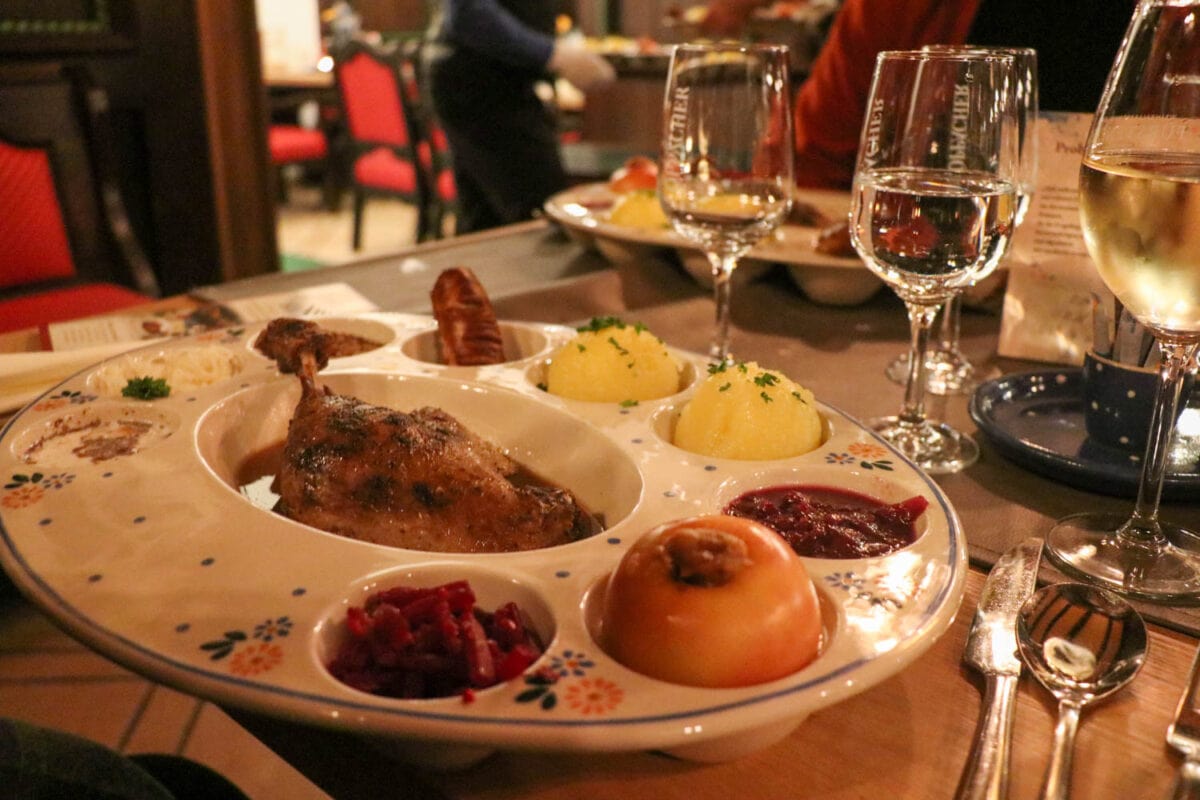
From Seiffen, we traveled to the town of Annaberg-Buchholz (a charming place with a sweet love story) for dinner at Zum Neinerlaa, known for its special Ore Mountains Christmas meal. The traditional “neunerlei” feast which originated from the traditional miner’s family Christmas Eve menu is made up of nine different dishes, served in one platter. Each dish symbolizes a wish.
Our server explains that the lentils mean “blessings and a little money; the celery salad is for fertility. Sausage is for strength and long life; dumplings are for big money, red cabbage is for harvest and the red beet salad is for beauty.” Individual dishes may vary from family to family, but the locals preserve the custom.
Don’t forget the German Stollen for Christmas!
Dumplings and Christmas Memories
The duck was too rich for me, but the dumplings took me back to what my family ate at community church dinners in my hometown of 2,000 people, many of whom had German roots.
Tasting the flavors of my youth brought back memories of gatherings and warm feelings. The mother of my closest friend baked plum kuchen in her cozy country kitchen for special occasions, and my dad made spicy sausage for neighbors, friends, and family at Christmas.
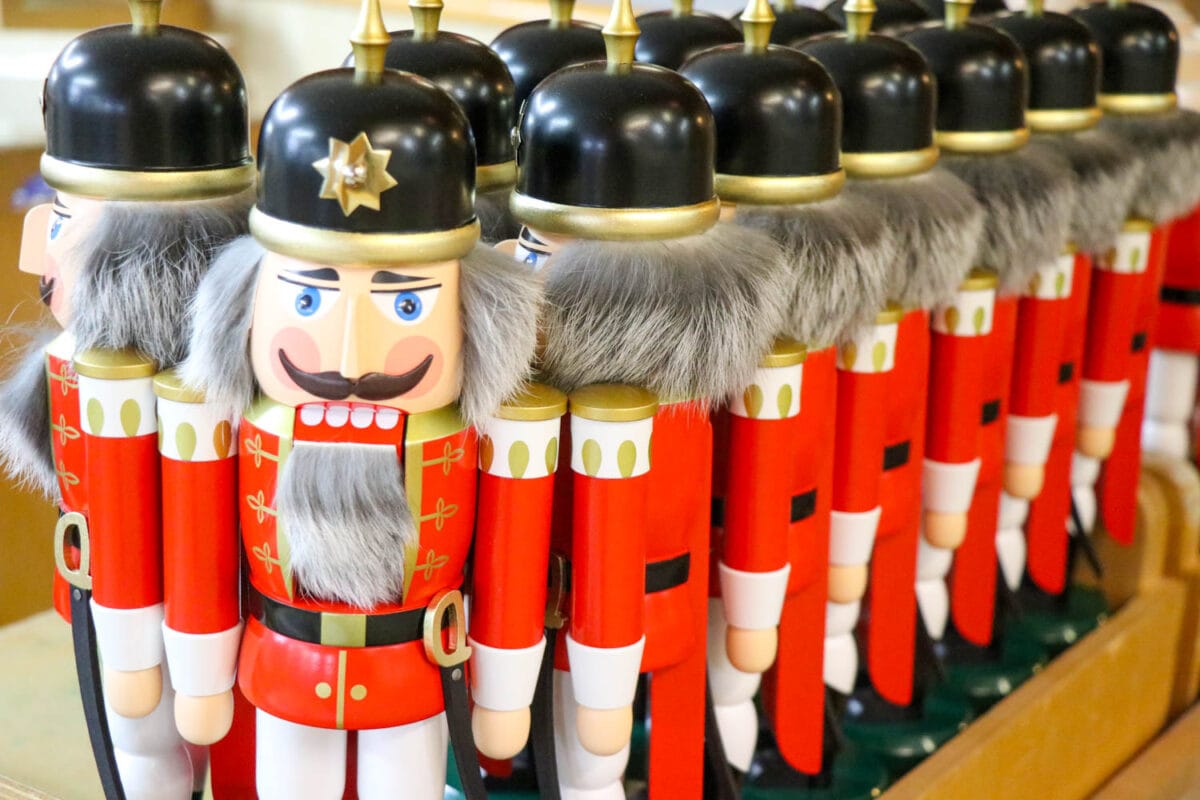
After dinner, I texted an image of nutcrackers to my great-niece in Colorado. Sammy responded, “Auntie, next time can I go with you?”
I smiled and thought to myself that the only thing better than visiting the Christmas capital of Germany would be to experience this enchanting village with a child.
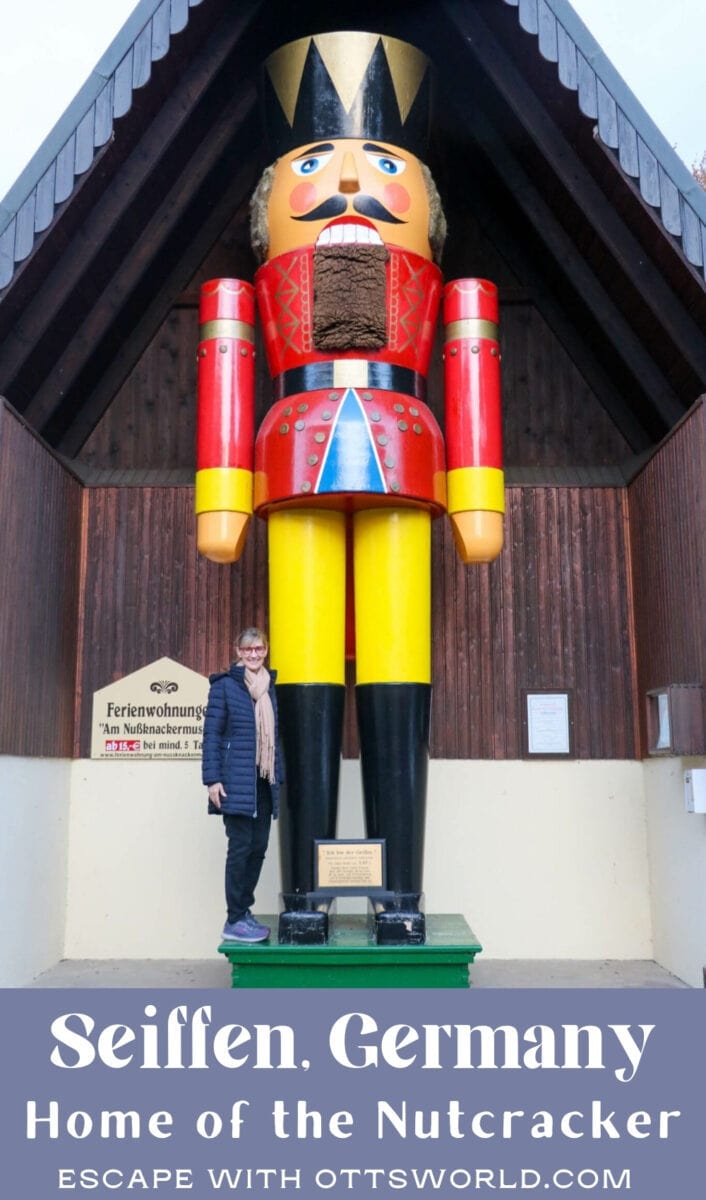
Traveling to Germany – What You Need to Know
Best resource: Saxony Tourism
The village of Seiffen, while a well-known town in Germany, could be considered off-the-beaten-path for travelers from the U.S. or other countries. In Seiffen, you will not hear English spoken as much as in the major cities of Germany. Even some of the websites for shops are in German only, making the area even more compelling to visit. The most reliable and up-to-date resource is Saxony Tourism.
Covid Guidelines
Because of Covid-19, there are extra steps to take to enter and depart Germany as well as during your stay. Prior to your flight to Germany, passengers must complete a form which the airline will provide and present before check-in. You will be asked to provide proof of vaccination before being allowed into galleries, museums, restaurants, and hotels. A copy is not acceptable. A negative COVID test is required 72 hours prior to departure from the country.
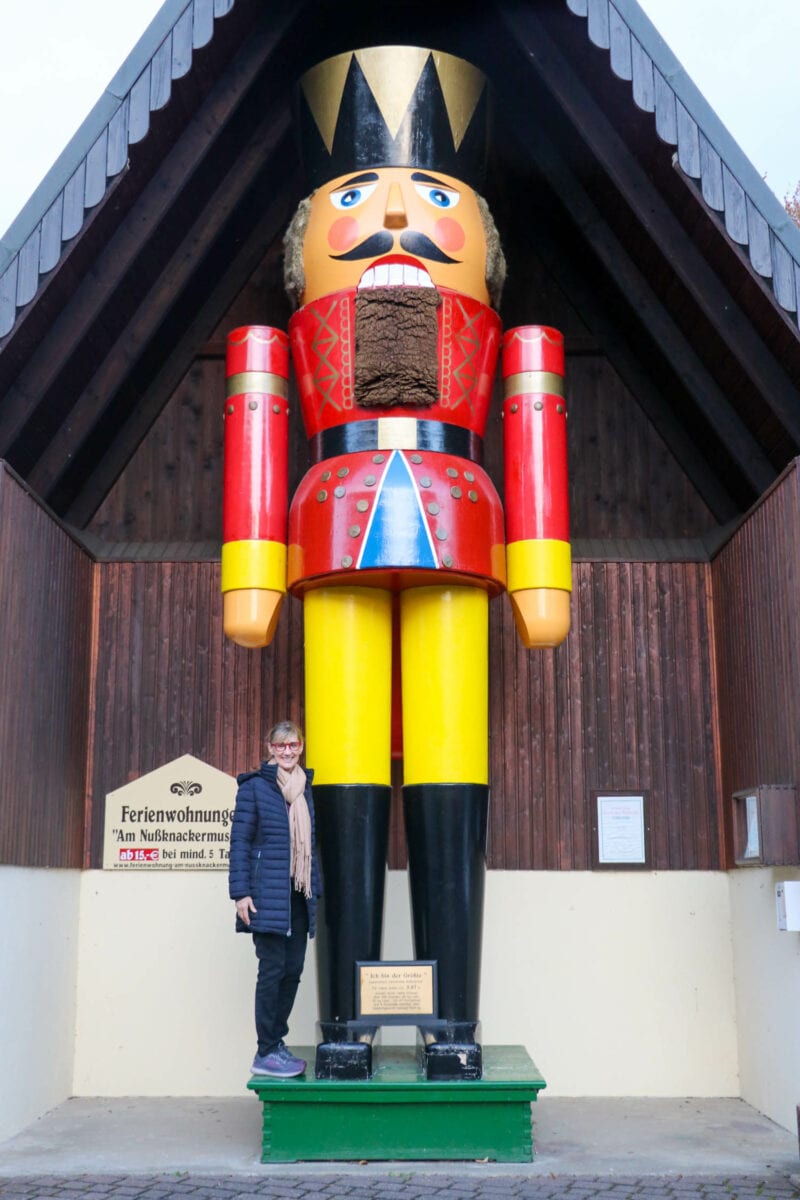
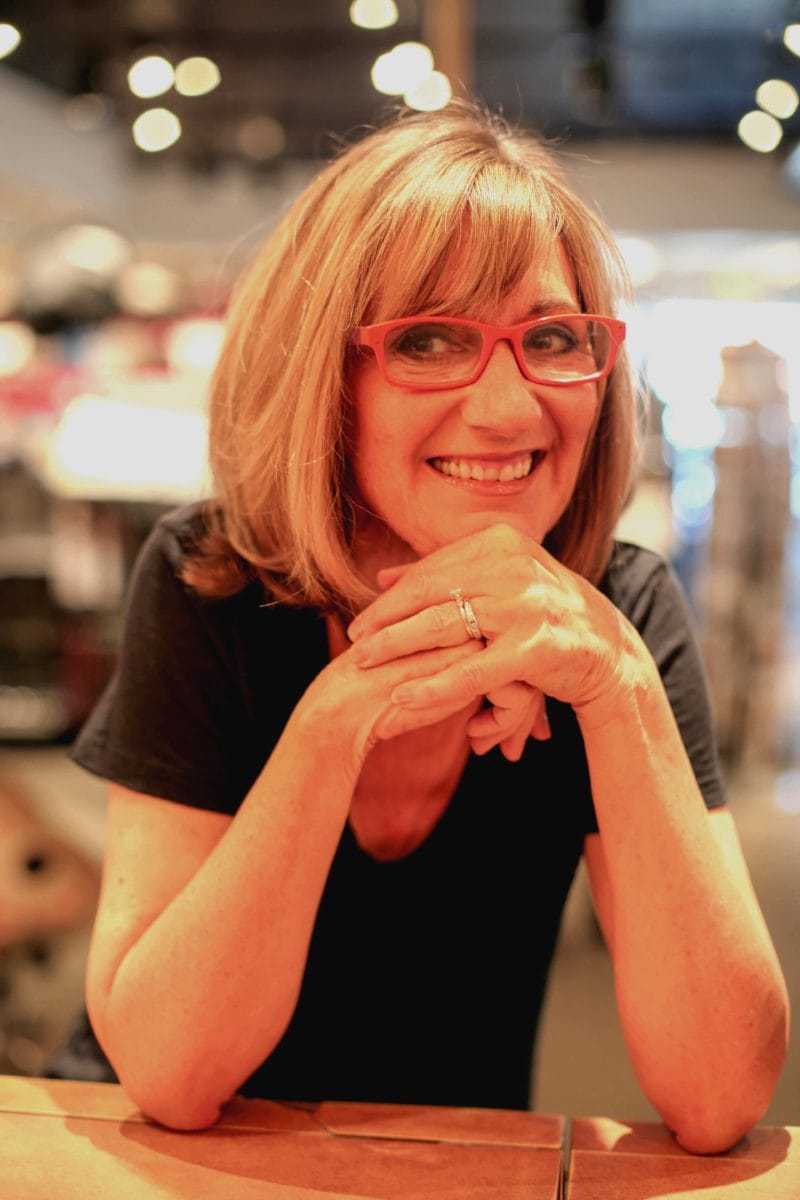
Meet the Author: Sherry Spitsnaugle, guidebook author, travel writer, wife and dog mom, first expressed her urge to explore at age four when she packed up her little red wagon and took off for an adventure— around the block. Today, she continues to fulfill her travel bug tendencies, exploring and writing about her experiences.
Instagram: sherryspitsnaugle
Related
Disclosure:
Sherry Spitsnaugle’s trip was hosted by Saxony Tourism, however all opinions expressed here are her own.